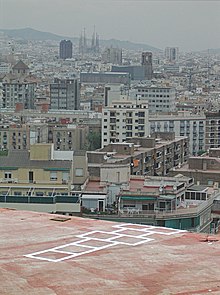

Black comedy, also known as black humor, bleak comedy, dark comedy, dark humor, gallows humor or morbid humor, is a style of comedy that makes light of subject matter that is generally considered taboo, particularly subjects that are normally considered serious or painful to discuss. Writers and comedians often use it as a tool for exploring vulgar issues by provoking discomfort, serious thought, and amusement for their audience. Thus, in fiction, for example, the term black comedy can also refer to a genre in which dark humor is a core component. Cartoonist Charles Addams was famous for such humor, e.g. depicting a boy decorating his bedroom with stolen warning signs including "NO DIVING – POOL EMPTY", "STOP – BRIDGE OUT" and "SPRING CONDEMNED."
Black comedy differs from both blue comedy—which focuses more on crude topics such as nudity, sex, and body fluids—and from straightforward obscenity. Whereas the term black comedy is a relatively broad term covering humour relating to many serious subjects, gallows humor tends to be used more specifically in relation to death, or situations that are reminiscent of dying. Black humour can occasionally be related to the grotesque genre.[1] Literary critics have associated black comedy and black humour with authors as early as the ancient Greeks with Aristophanes.[2][3][4][5][6][7][excessive citations]
- ^ Merhi, Vanessa M. (2006) Distortion as identity from the grotesque to l'humour noir
- ^ Dark Humor. Edited by Blake Hobby. Chelsea House Press.
- ^ "Black humour". britannica.com. Archived from the original on 18 January 2023. Retrieved 15 April 2018.
- ^ Garrick, Jacqueline and Williams, Mary Beth (2006) Trauma treatment techniques: innovative trends pp. 175–176
- ^ Lipman, Steve (1991) Laughter in hell: the use of humor during the Holocaust, Northvale, N.J:J Aronson Inc.
- ^ Kurt Vonnegut (1971) Running Experiments Off: An Interview, interview by Laurie Clancy, published in Meanjin Quarterly, 30 (Autumn, 1971), pp. 46–54, and in Conversations with Kurt Vonnegut, quote:
The term was part of the language before Freud wrote an essay on it—'gallows humor.' This is middle European humor, a response to hopeless situations. It's what a man says faced with a perfectly hopeless situation and he still manages to say something funny. Freud gives examples: A man being led out to be hanged at dawn says, 'Well, the day is certainly starting well.' It's generally called Jewish humor in this country. Actually it's humor from the peasants' revolt, the forty years' war, and from the Napoleonic wars. It's small people being pushed this way and that way, enormous armies and plagues and so forth, and still hanging on in the face of hopelessness. Jewish jokes are middle European jokes and the black humorists are gallows humorists, as they try to be funny in the face of situations which they see as just horrible.
- ^ Bloom, Harold (2010) Dark Humor, ch. On dark humor in literature, pp. 80–88